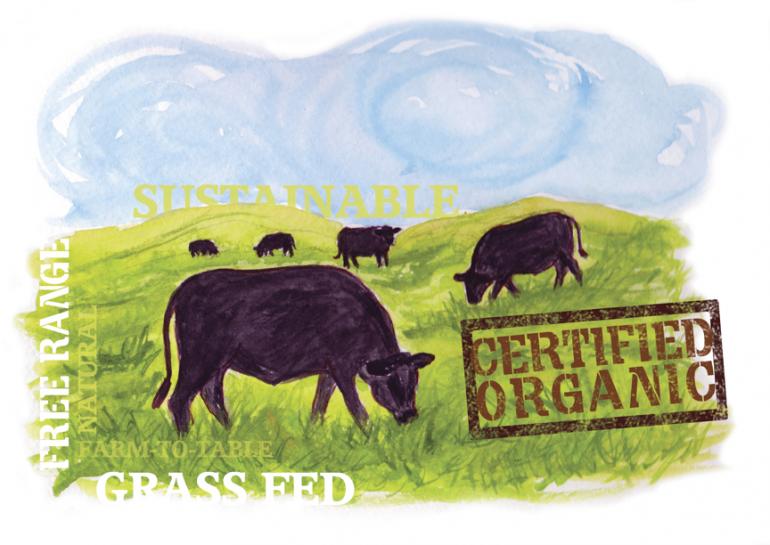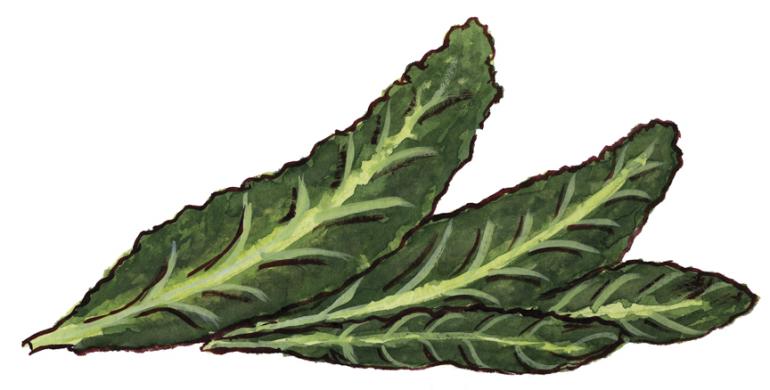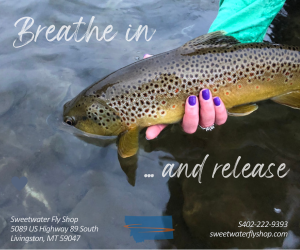Food Decoded
With more and more food-production designations and corresponding specialty labels, it’s getting hard to tell what exactly you should be eating. What do all the terms and grocery-store labels mean? In an attempt at truth in advertising, here’s what to look for when you’re shopping around.
Local. Though it’s not always clearly labeled, buying local food is one of the easiest ways to shop sustainably. Look for “Made in Montana” labels, and you’ll know that the item you purchase is contributing directly to your local economy, and that it’s usually transported thousands of miles less than other products. If you can’t buy Montanan, look for regional food from neighboring states such as Idaho and Wyoming, or nearby places like Washington, Oregon, and California to decrease transportation impacts. And if you’re not sure which food is local, ask store clerks or vendors; they often know the farms they purchase from and can pass that information on to you.
Free-Range. This term simply means that the animal (whether it produced meat, eggs, or dairy) was allowed access to the outside; it applies whether the animal actually lived outdoors or not, was fenced in, or had access to any vegetation. It’s one of the more misleading designations out there.
Organic. Overseen by the USDA, this is one of the most heavily regulated labels. If the label says “100% Organic,” all its ingredients are organic; just “organic” means it has at least 95% organic ingredients; and “Made with Organic Ingredients” means it’s at least 70% organic. Food can’t legally be labeled “organic” unless it meets government standards. To meet these standards, organic food must be produced without using certain methods such as genetic engineering and ionizing radiation, and it must be made in concordance with the National List of Allowed and Prohibited Substances. If you know the practices of a local farm, however, that may be a better alternative as many small farmers lack certification due to expense and red tape.
Cage-Free. If eggs carry this label, it means the birds are allowed to roam freely, but generally don’t have access to the outdoors. They’re given enough space to spread their wings, walk, and nest, and beak cutting is prohibited; however, the birds are often still over-crowded into small farmhouses.
Natural. This label, which lacks consistent standards, implies that the product contains no artificial ingredients or colors and is minimally processed; it basically means that the essential structure of the food isn’t greatly altered. There is no legal U.S. definition for “natural,” so be vigilant when considering food labeled as such because it can be (and frequently is) misleading.
No Hormones Added. Hormones are commonly used to speed up growth rates. All poultry and pork is legally required to be hormone-free; if this type of meat carries that claim on its packaging, it must be followed by “federal regulations prohibit the use of hormones,” so it doesn’t seem to have an unfair advantage. Beef products, however, are not required to be hormone-free and farmers must have sufficient evidence that the meat was raised with no hormones to be certified by the government.
Kosher. Food that is Kosher has no added health certifications; it simply means that the meat was prepared under rabbinical supervision.
No Antibiotics. This applies to beef, pork, and poultry. Farmers prove that they don’t use antibiotics to manage disease when raising their animals and the food can carry this (less strictly regulated) label.
Fair-Trade. This certification, which is similar to organic, is a rigorous process (overseen by a social contract that does not carry a legal label in the U.S. as it does abroad) that analyzes the sustainable and humanitarian practices of the companies you’re buying from, often in an attempt to improve production in developing countries. It can be a great label to support, but there is political and ethical controversy surrounding the “fair trade” label. Do some research and decide for yourself.
Overwhelmed? Just remember that the most important labels to look for when trying to eat healthily and sustainably are “local” and “organic.” These labels are heavily regulated and true to what they promote. But don’t automatically dismiss all other labels; instead, do your own investigating—talk to the manager or the people at the meat counter, as they may have more information on the products you’re buying. Most importantly, be an informed consumer and do your own research if you’re unsure. Visit fsis.usda.gov for more info.

















